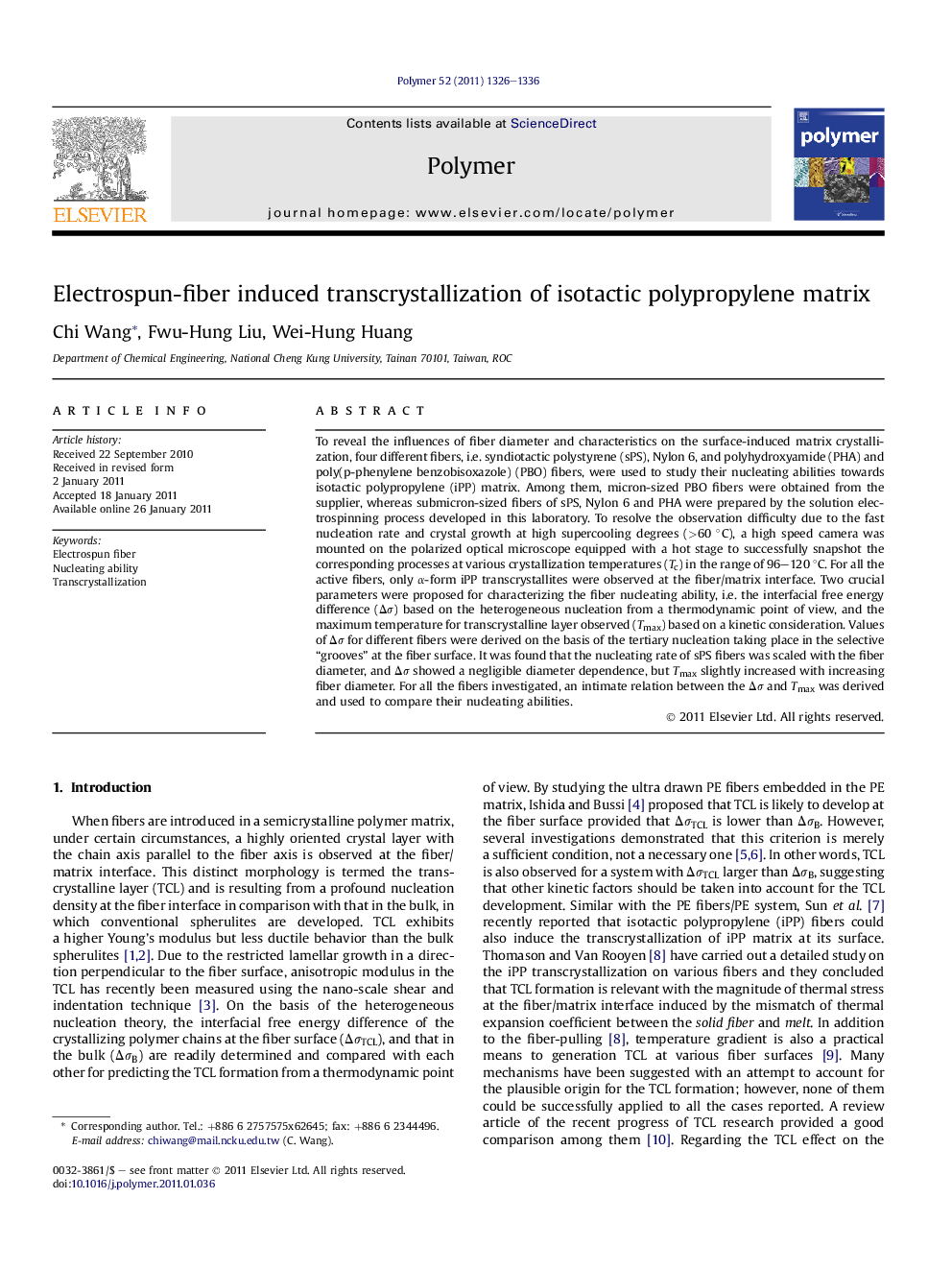| Article ID | Journal | Published Year | Pages | File Type |
|---|---|---|---|---|
| 5184120 | Polymer | 2011 | 11 Pages |
To reveal the influences of fiber diameter and characteristics on the surface-induced matrix crystallization, four different fibers, i.e. syndiotactic polystyrene (sPS), Nylon 6, and polyhydroxyamide (PHA) and poly(p-phenylene benzobisoxazole) (PBO) fibers, were used to study their nucleating abilities towards isotactic polypropylene (iPP) matrix. Among them, micron-sized PBO fibers were obtained from the supplier, whereas submicron-sized fibers of sPS, Nylon 6 and PHA were prepared by the solution electrospinning process developed in this laboratory. To resolve the observation difficulty due to the fast nucleation rate and crystal growth at high supercooling degrees (>60 °C), a high speed camera was mounted on the polarized optical microscope equipped with a hot stage to successfully snapshot the corresponding processes at various crystallization temperatures (Tc) in the range of 96-120 °C. For all the active fibers, only α-form iPP transcrystallites were observed at the fiber/matrix interface. Two crucial parameters were proposed for characterizing the fiber nucleating ability, i.e. the interfacial free energy difference (ÎÏ) based on the heterogeneous nucleation from a thermodynamic point of view, and the maximum temperature for transcrystalline layer observed (Tmax) based on a kinetic consideration. Values of ÎÏ for different fibers were derived on the basis of the tertiary nucleation taking place in the selective “grooves” at the fiber surface. It was found that the nucleating rate of sPS fibers was scaled with the fiber diameter, and ÎÏ showed a negligible diameter dependence, but Tmax slightly increased with increasing fiber diameter. For all the fibers investigated, an intimate relation between the ÎÏ and Tmax was derived and used to compare their nucleating abilities.
Graphical abstractDownload full-size image
